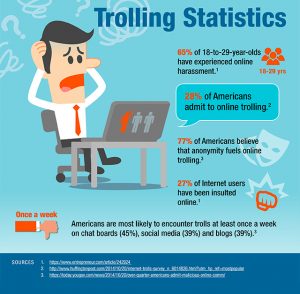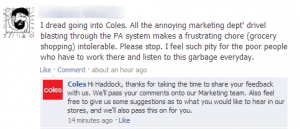Sick And Tired Of Social Media Trolls?- 7 Ways To Deal With Social Media Trolls
Tired of people who leave negative comments on your social media page?
You’re not alone!
On social media, trolls are everywhere, and it’s almost impossible to dodge them.
Trolls can cause a lot of damage to your brand if not dealt with in the right way. What “the right way” is, and how you should respond to them to minimize damage is exactly what you’ll learn in this article.
What are social media trolls?
As usual, Wikipedia’s definition is kind of disappointing. Mostly because it’s a bit incomprehensible and doesn’t give us the full story.
“In Internet slang, a troll (/ˈtroʊl/, /ˈtrɒl/) is a person who sows discord on the Internet by starting quarrels or upsetting people, by posting inflammatory, extraneous, or off-topic messages in an online community (such as a newsgroup, forum, chat room, or blog) with the intent of provoking readers into an emotional response or of otherwise disrupting normal, on-topic discussion, often for the troll’s amusement.”
Therefore, I’ll try my best to give a clear and straight-forward explanation of the word.
Trolls can be found on the internet and are individuals who intentionally stir up communities in the hopes of a reaction. They are often sharing hate-filled messages and are often very persistent. Some trolls can clench onto you like termites and if you don’t deal with them, they can stay there forever. What defines trolls by nature is that they spread negativity and complain without any relevant grounds.
It doesn’t have to be more complicated than that!
Trolls are not only found on social media but everywhere on the internet. In chat groups, In comment sections, on forums etc.
As a brand, it is crucial that you know how to deal with trolls so that they don’t end up harming your brand and makes it look like you are the one who is wrong. Moreover, what is also dangerous is that trolls that don’t feel like they’re getting the attention they are hoping for. Note that just because someone disagrees with you or complains about your brand doesn’t make them trolls. People can dislike or disagree with your brand and not be a troll. Some people think that in order to be classified as a troll, you need to use a fake name and comment negatively on every post someone share, but this is debatable and I don’t completely agree with that.
I believe that if a person is expressing their disagreement/dislike in a way that is intentionally harmful, mean, or threatening, or in any other way makes the community an unsafe place for others, that’s when we’re entering troll territory.

7 Ways To Deal With Social Media Trolls
Should you ignore trolls?
A common question that is frequently being asked is if you should ignore trolls. I’ve seen mixed opinions on this so I thought I’d give you the ultimate answer once and for all. Some claim that ignoring trolls is the best way to deal with them because if you do, eventually they’ll get bored and go somewhere else. Others say that ignoring them only makes them angrier and more aggressive and provocative.
Here’s my take on it:
When you don’t respond, it makes them more superior as it gives them the power to silence you. Essentially, it shows the troll that they won, even though that isn’t the case. You might believe that when you ignore the trolls, eventually they’ll get bored, but that isn’t necessarily the case. Yes, that might happen, but what’s surprising about trolls is that they are extremely patient, and it can take a long time before they stop.
By the time that happens, they will have caused a lot of damage to your brand – damage that could have been prevented if you’d just dealt with them in a better way.
1. Avoid feeding the trolls
When you have people who are trolling on social media, you should avoid feeding them at all cost.
When feeding the trolls, you’ll only make them angrier and more active on your page. To avoid feeding them, you should avoid responding in a manner that stoops to the troll’s level.
If you do this, you risk two outcomes. First, you risk feeding the trolls and getting into an engaging and unwinnable argument that will escalate. Second, you risk making your audience see you in a bad light. (More on that in point 5).

2. Respond with humor
Humour is one of the most effective ways to deal with rolls, but it is also one of the most dangerous.
If used correctly, you can disarm the trolls and shoo them away from your page so they never return. However, if you do it the wrong way, you risk making the troll even angrier, and potentially help make the trolls start a riot and get more people involved.







